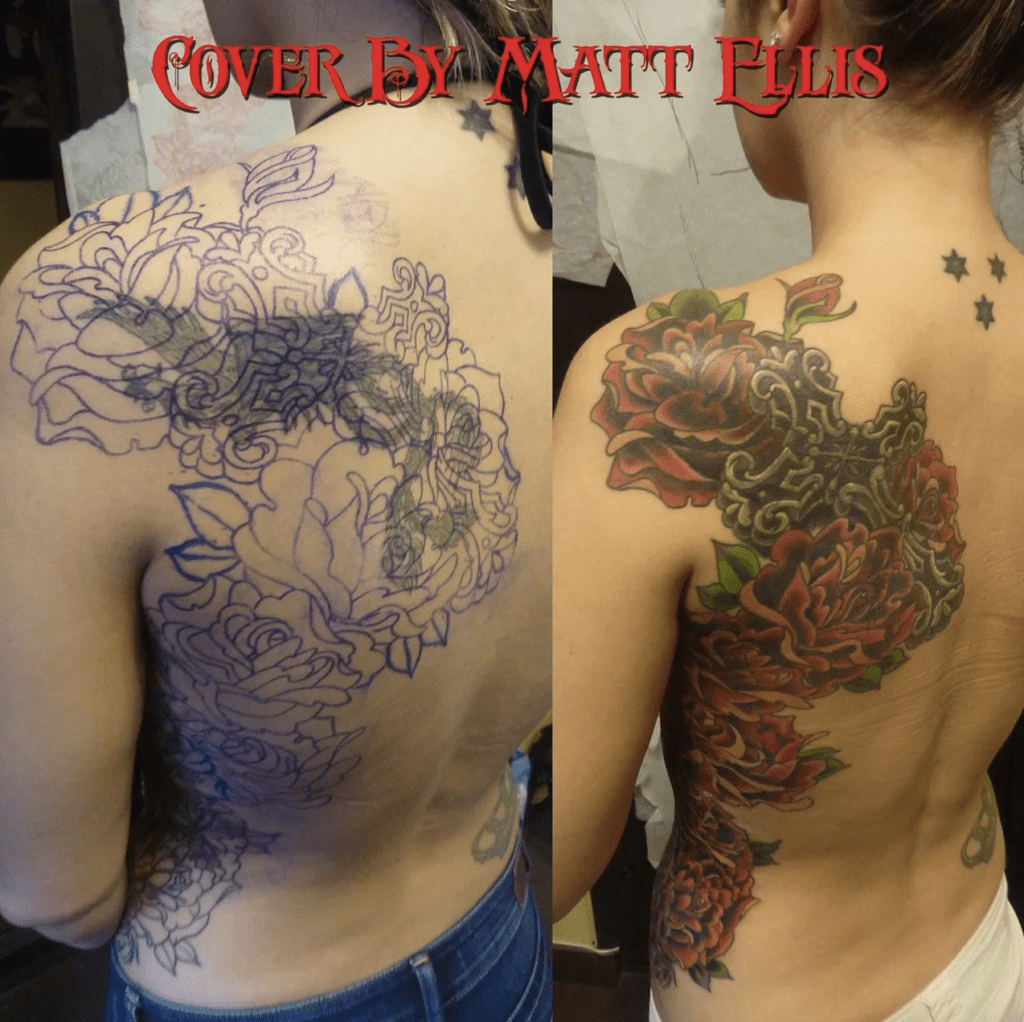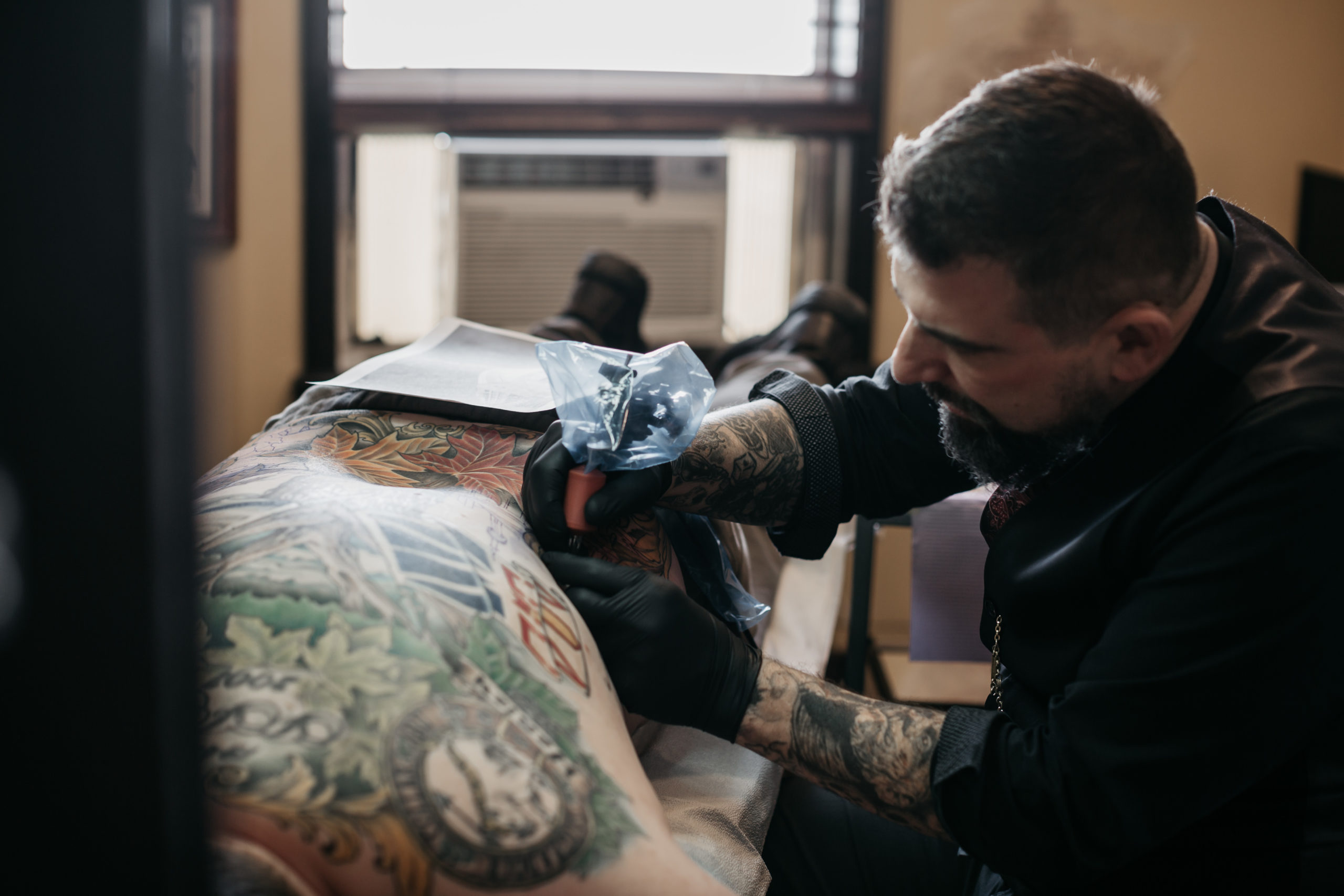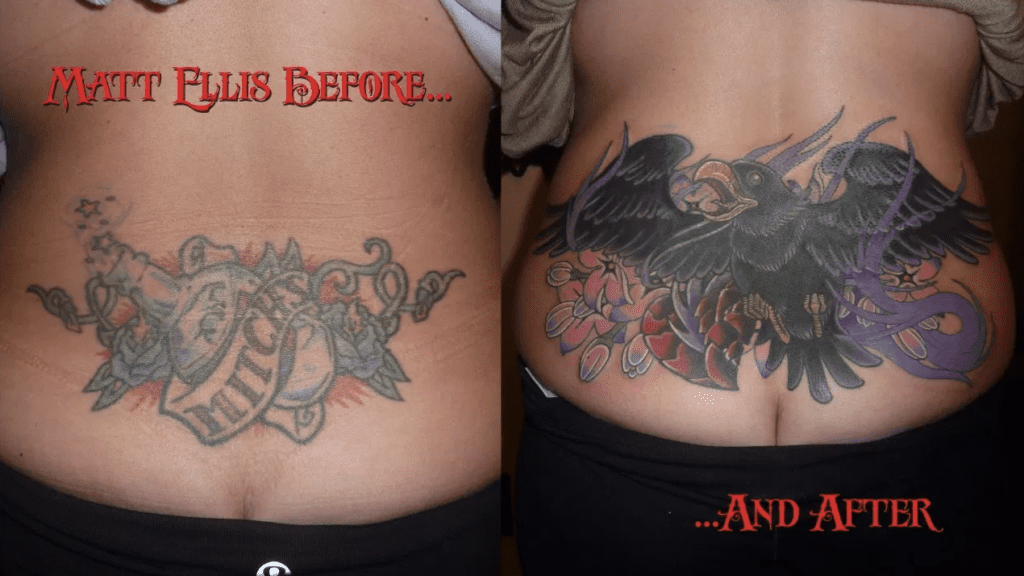

Getting a Cover Up Tattoo
In a sense, the term “cover up tattoos” is a misnomer. Covering a tattoo is not like painting over a colour on a wall. The colours of your tattoo will blend and maintain visibility through colours that are applied over the existing work. Even straight black can present a problem, as any raised or scarred portions will remain–the black providing little cover in those cases. Therefore, it is important to use several elements of design to create a camouflage effect. Successful cover up tattoos require a carefully thought out combination of these elements, and that plan starts with you.
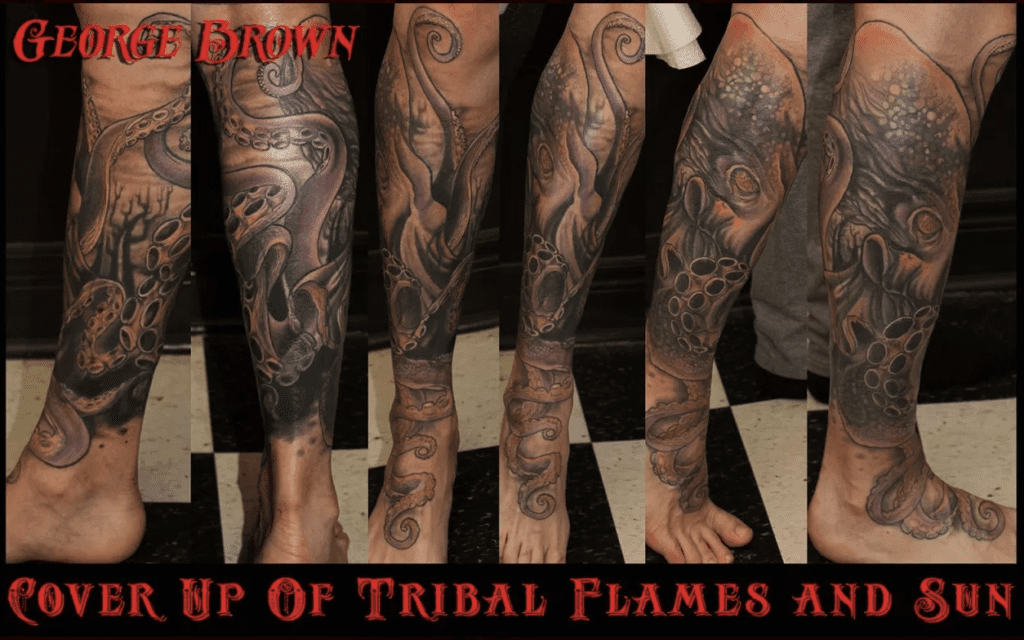

The Subject
This one counts. The likelihood of covering a cover-up without winding up with a big dark mess is fairly low, so be sure that this time you are picking something that will resonate with you for decades to come. As well, be sure to have a solid idea for the subject matter, but understand that the artist may offer relative alternatives if your selection won’t make for an effective cover of the existing work. So try not to show up married to an idea, but have a good general list of subject matter that you want to be included.
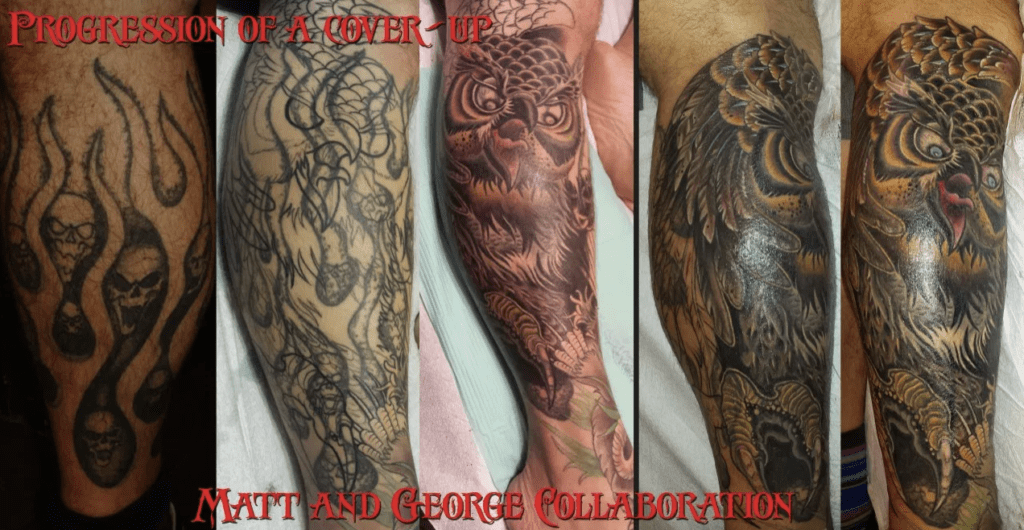

The Layout
Layout is key to winning cover up tattoos. You are going to have little say in this regard, but be sure to suggest that one element that is important to you be highlighted or prominent in some way, as we want you to be happy in the long-run with the choices you’ve made. The artist will draw the piece so that shaded or busy segments are placed over darker areas in the existing work, and that highlights or open colour fields will wind up in areas where there is little or no cover up necessary.
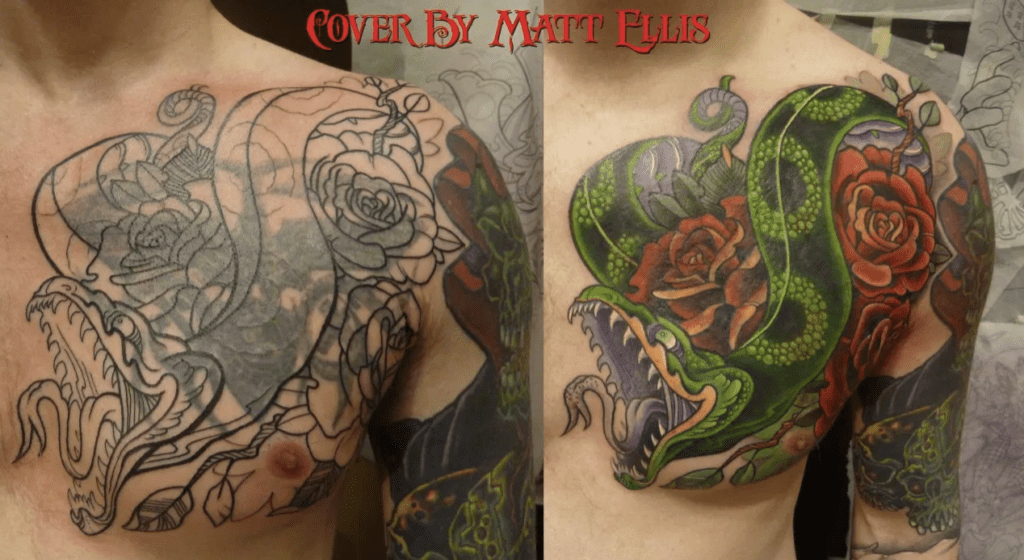

The Details
As well, detail is imperative to taking the eye away from the existing piece and ensuring camouflage is achieved. A busy tattoo will cover well. Conversely, a tattoo with large, uninterrupted colour fields does not make for a good cover up tattoo. So think busy and mutable (flowers, feathers, fur, etc.).
The Colour
Colour choice also comes into play with cover ups. Naturally, lighter colours will allow the other piece to show through, so suggestions will be made by your artist as to how the colour will be handled. We still want to maintain contrast for readability and keep it as bright as possible to avoid muddiness, so brighter areas and colours will be included in a good cover. But most cover ups are not going to lean yellow or pink. This is where faith in your artist will have to be absolute.
The examples provided are evidence that not all is lost, no matter how dark or dire the situation may seem. Our artists may also have other suggestions in order to get you the best cover up tattoo possible. You may have to compromise here and there, but there are options, and we are here to provide you with the information and experience that will ensure that you will have a great piece of art once more.
